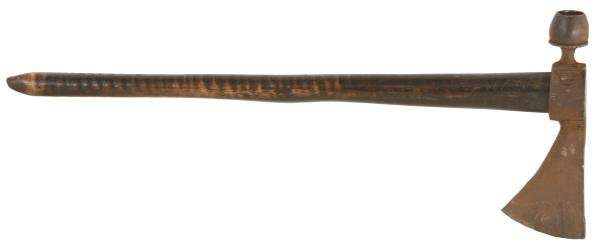 Somewhere, I read (at the Cleveland Natural History Museum? the Great Lakes Science Center?) that the mouth of the Cuyahoga River was a swampy, mosquito-ridden land when Moses Cleaveland first surveyed the lots for Cleveland in 1796. When it comes to that, it still is. Enter any Cleveland woods mid-summer and the mosquito whine is sure to drive you back out.
Somewhere, I read (at the Cleveland Natural History Museum? the Great Lakes Science Center?) that the mouth of the Cuyahoga River was a swampy, mosquito-ridden land when Moses Cleaveland first surveyed the lots for Cleveland in 1796. When it comes to that, it still is. Enter any Cleveland woods mid-summer and the mosquito whine is sure to drive you back out.
How did 19th century denizens of Cleveland cope with mosquitoes? Window screens did not come into use until after the Civil War. Research tells me they did have mosquito nets. I also found an 1862 reference to “head-bags made of crape.” Another source mentioned a practice of wrapping one’s hands in green baize–the fabric that covered billiard tables.
A search through 19th century newspapers elicited the following:
9/8/1858 – Newark Advocate
Where Mosquitoes Come From
These pests of summer proceed from the animalculas commonly called ‘wiggle tails.’ … If a bowl of water be placed in the summer’s sun for a few days, a number of ‘wiggle tails’ will be visible, and they will increase in size till they reach three-sixteenths of an inch in length,–remaining longer at the surface as they approach maturity. … In a short time a fly will be hatched and escape leaving its tiny house upon the surface of the water. … In fact, standing by a shallow, half-stagnant pool on a midsummers day, the full development of any number of ‘wiggle tails’ to the mosquito state can be witnessed, and the origin of these disturbers of night’s slumbers thus fully ascertained. — Scientific American
8/8/1870 Daily Cleveland Herald
Sparrows and Mosquitoes
… Four years ago, 20 pairs [of English sparrows] were imported [into New York City], and provision was made for their accommodation. Now it is estimated that there are five thousand pair in the New York parks and gardens; and their active and industrious habits are believed to have materially diminished the swarms of mosquitoes which have heretofore made New York a byword and a hissing among all light sleepers who have sensitive skins. This theory is stengthened (sic) by the fact that the same experience has marked the introduction of sparrows into Jersey City–the mosquitoes having greatly diminished there even, which is mosquito land itself. If there is anything to this … then we [of Boston] go for importing one thousand, or five thousand pair at once, to be domesticated in Boston and immediate neighborhood, as a matter of more importance to the peace and comfort of our citizens than would be the addition of a hundred extra policemen. — Boston Traveler
9/3/1881 Cleveland Herald
A 15c box of ‘Rough on Rats’ will keep a house free from flies, mosquitoes, rats and mice the entire season. — Druggists
Finally, I found a reprint of this legend in the 9/7/1872 Cleveland Morning Daily Herald:
Origin of Mosquitoes
We take the following legend from the Minneapolis Tribune:
The Red River Indians have a legend respecting the origin of mosquitoes. They say that once upon a time there was a famine, and the Indians could get no game. Hundreds had died from hunger, and desolation filled their country. All kinds of offerings were made to the Great Spirit without avail, till one day two hunters came upon a white wolverine, a very rare animal. Upon shooting the white wolverine, an old woman sprang out of the skin, and saying that she was a “Manito,” promised to go and live with the Indians, promising them plenty of game as long as they treated her well and gave her the first choice of all the game that should be brought in.
The two Indians assented to this and took the old woman home with them–which event was immediately succeeded by an abundance of game. When the sharpness of the famine had passed the Indians became dainty in their appetites, and complained of the manner in which the old woman took to herself all the choice bits; and this feeling became so intense that, notwithstanding her warnings that if they violated their promises a terrible calamity would come upon the Indians, they one day killed her as she seized upon her share of a fat reindeer which the hunters had brought in.
Great consternation immediately struck the witnesses of the deed, and the Indians, to escape the predicted calamity, boldly struck their tents and moved away to a great distance.
Time passed on without any catastrophe occurring, and game becoming even more plentiful, the Indians again began to laugh at their being deceived by the old woman. Finally, a hunting party on a long chase of reindeer, which had led them back to the spot where the old woman was killed, came upon her skeleton, and one of them, in derision, kicked the skull with his foot. In an instant a small, spiral-like body arose from the eyes and ears of the skull, which proved to be insects. They attacked the hunters with great fury and drove them to the river for protection. The skull continued to pour out its little stream, and the air became full of avengers of the old woman’s death. The hunters, upon returning to camp, found all the Indians suffering terribly from the plague, and ever since that time the red men have been punished by the mosquitoes for their wickedness to their preserver, the Manito.













